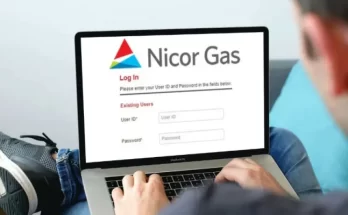People who own commercial buildings have had to deal with commercial water damage cleanup at some point. Commercial water damage can have many negative impacts on a business, especially if it is not fixed as soon as possible.
For businesses to be able to act quickly and mitigate water damage, it is important for business owners to know the main causes of water damage, the signs to look out for, and what happens during a commercial water damage cleanup.
Main causes of commercial water damage
Some of the most common things that would prompt a business owner to opt for water damage cleanup include:
Broken pipes
There are many factors that could contribute to pipes breaking within a building. A change in pressure can cause pipes to burst. Additionally, freezing temperatures can also cause pipes to break. Signs of water damage caused by pipe problems include:
- Water stains on the ceilings, floors, and walls
- Loose or cracked tiles
- Musty odor
Leaky sprinkler systems
Just like broken pipes, a faulty sprinkler system in a building can cause some serious water damage. The main tell-tale signs of a leaking sprinkler system in a building include:
- Wet carpets and walls
- Musty smell
- Growth of mold on the ceiling and cracks in the walls
- Presence of standing water in the building
Damaged roof
Extreme weather conditions like floods, strong winds, snow, and heavy rains can cause roof damage. Additionally, missing shingles, structural damage (e.g. a tree trunk falling on a roof), and improper roof maintenance can also result in roof damage. Obviously, a damaged roof will leak water into the building thereby causing water damage.
Faulty HVAC system
Commercial premises need a clean and well maintained HVAC system to ensure the comfort of customers and employees within the building. However, HVAC ducts tends to get damaged or wear out over time, thus leading to water damage, which requires urgent water damage cleanup.
Steps of a commercial water damage cleanup
Anyone who owns a commercial building with serious water damage should follow the commercial water damage cleanup process below to mitigate water damage:
1. Get in touch with the insurance company
The owner of the building should contact the insurance company and report the water damage to the building. The insurance company will then send in an adjuster to assess the extent and effects of the water damage to the commercial building.
Depending on the policies of the insurance company, the adjuster will determine whether the company will cover the cost of carrying out a water damage cleanup.
Business owners are recommended to collect as much information about the water damage as possible. This could include:
- Documenting the value of every structure of the commercial building affected by water damage, such as tiles, ceilings, carpets and many more.
- Taking pictures of the structural damage of the building before the commercial water damage clean up, during the cleanup, and after the cleanup.
The above information will help the insurance adjuster assess the cost of the water damage. Unfortunately, not all insurance policies provide water damage coverage.
Property owners are advised to confirm whether their insurance provider covers water damage before buying the policy, because they will likely deal with water damage at some point.
2. Deal with electrical and gas systems
After dealing with insurance, the next step is to ensure that all the gas and electrical devices are turned off. If possible, turn off the main switch of gas and electricity. This is because you can never be sure if the gas and electrical system of the building has been compromised.
Do not attempt to evaluate the electrical and gas system of the building on your own. Have a professional licensed electrician or heating engineer come to the building to check out the system and determine whether the systems are affected by water damage.
3. Bring in a water damage inspector
Call a water damage inspector to come and determine whether the water responsible for causing the water damage is contaminated or not. There are three types of water damage that the building may experience:
Clean water damage– this type of water damage occurs when the water involved is considered clean and non-toxic. Uncontaminated water can result from a broken water pipe or faulty appliance. However, if it is not dealt with immediately, the uncontaminated water may pick up germs and bacteria over type, thereby contaminating the building as well.
Gray water damage– just as the name suggests, the water is gray in color and contains some contaminants though not the toxic kind. Sources of gray water may include leaking water from a toilet (without feces), rain water, dishwasher water, washing machine water, and snow.
Black water damage– this is a dangerous type of water damage because the water involved is black and extremely toxic. Black water damage can destroy a business. This is because the entire building could even be evicted because of high levels of contamination. Sources of black water include sewage, overflowing rivers, and groundwater.
Once the inspector tests the water, they will advise you on the best way forward for the building. Please note that if a building experiences black water damage, some parts of the building may not be salvaged.
4. Sign a contract with commercial water damage cleanup services
A water damage cleanup service will send its specialists to check out your building and determine the scope of water damage. You will then be required to sign a contract. The contract will indicate an estimate of the price of the services you can expect from the organization.
Before you sign the contract, confirm with your insurance company to find out which services are covered by the policy and which ones are not. This will help you budget well for the cleanup.
5. Commercial water damage cleanup
The water damage cleanup company will send repair specialists to the building to carry out sanitation and cleanup exercises. The specialists may use dehumidifiers, driers, air movers, and extractors to perform water extraction and sanitization on the building.
Depending on the effects of the water damage, the cleanup service may also perform or recommend mold remediation to get rid of any mold. The company will inform you of any other repair and restoration that the building may need before it resumes its commercial activities.
Do you have any questions about commercial water damage cleanup that you would like us to address? Get in touch with us today.



